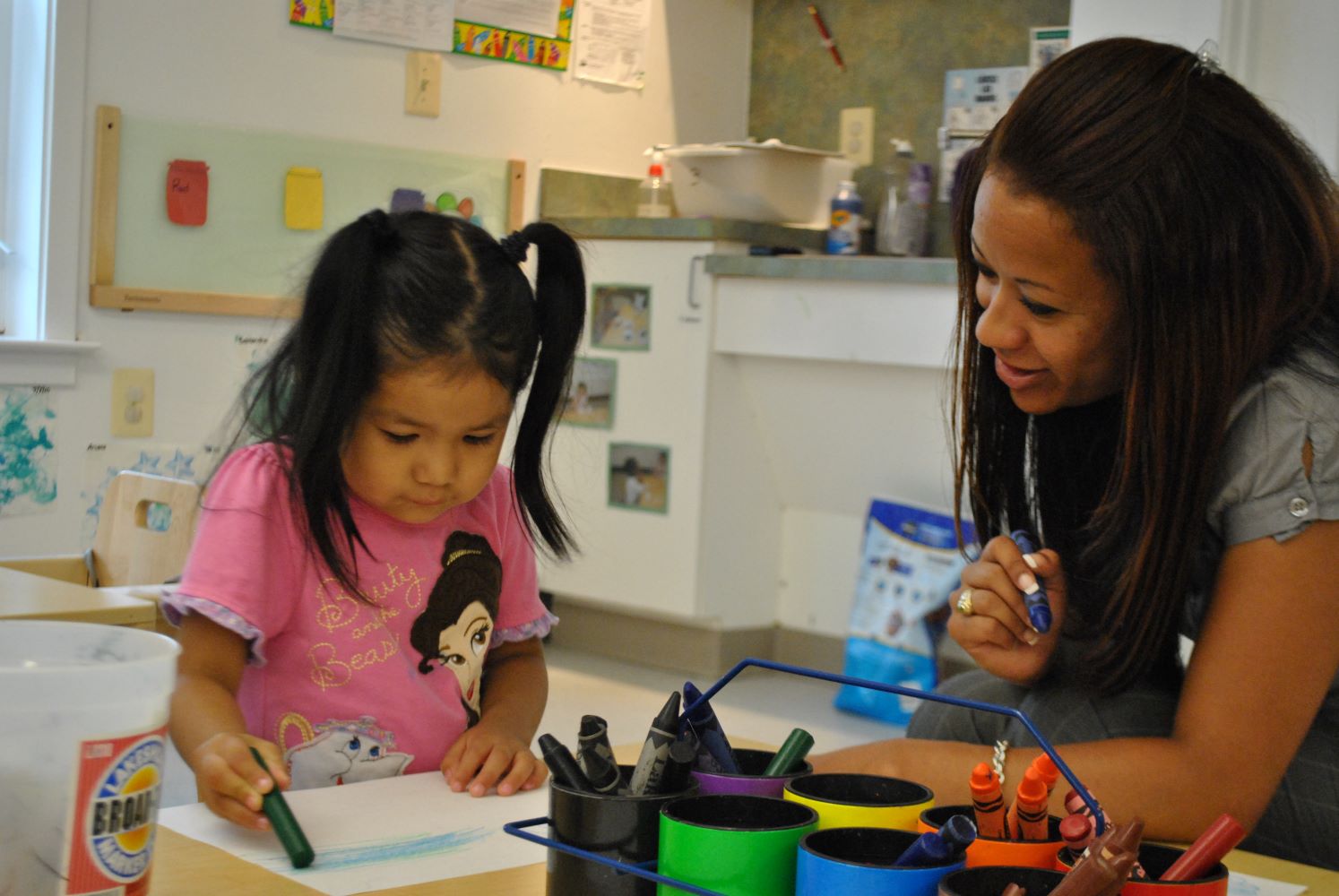 Accurately interpreting information from ongoing child assessment is an essential part of reflection. Remember, interpretation is the process of giving meaning to the information that has been documented. This is not always easy to do! For example, first impressions of what infants or toddlers can or cannot do (without having enough information) may sometimes lead to inaccurate assumptions or expectations. In group care settings, this may affect staff interactions with children and the quality of the relationships, which may then impact children’s development and learning.[5] In home-based settings, this may affect home visitors’ relationships with parents and other family members. Education leaders can encourage staff to keep an open mind as they observe children, talk with families, gather information that challenges their first impressions, and adjust their expectations as they learn about each child over time.[6]
Accurately interpreting information from ongoing child assessment is an essential part of reflection. Remember, interpretation is the process of giving meaning to the information that has been documented. This is not always easy to do! For example, first impressions of what infants or toddlers can or cannot do (without having enough information) may sometimes lead to inaccurate assumptions or expectations. In group care settings, this may affect staff interactions with children and the quality of the relationships, which may then impact children’s development and learning.[5] In home-based settings, this may affect home visitors’ relationships with parents and other family members. Education leaders can encourage staff to keep an open mind as they observe children, talk with families, gather information that challenges their first impressions, and adjust their expectations as they learn about each child over time.[6]
Adults have various “lenses” through which they observe and interpret children’s behavior and learning. For example, “culture, temperament, personal experiences, professional knowledge, and even community values and messages in the media affect how staff and families see and experience children.”[7] Read “Identifying the ‘Lenses’ Through Which Staff and Families Observe Children” in Child Observation: The Heart of Individualizing Responsive Care for Infants and Toddlers for more information and strategies for working with staff and families.
Here are additional recommendations for helping staff interpret child information:
- Encourage staff to develop several hypotheses of what the information might say about a child: Sometimes staff have trouble thinking about other potential interpretations. For example, there could be health and attendance issues, challenging family circumstances, or undiagnosed delays that affect a child’s behavior or progress. Having alternate hypotheses makes it easier to figure out what the assessment information means.
- Encourage staff to talk with their supervisor if they think an undiagnosed delay may be slowing or blocking a child’s progress: This can be a sensitive topic to bring up with parents and conversations should be handled as carefully as possible. Supervisors can help staff prepare for the conversation. Additionally, remind staff that ongoing conversations with families about their children’s development and learning help build trusting, reciprocal relationships. These relationships can help staff ease into conversations about difficult topics.
- Encourage staff to intentionally pursue regular communication with children’s families: Parents and family members can share what is happening in their lives and help staff understand children’s communications and behaviors. For example, children may verbalize more with parents and family members, but not in group care settings, group socializations, or when the home visitor is conducting a home visit. This information can be especially useful if the child is learning a language other than English at home. The child may understand and communicate more than staff realize.
Whether done informally or as part of the ongoing assessment process, staff can use observation, documentation, reflection, and interpretation to individualize supports for the abilities, interests, preferences, and needs of each infant and toddler. Planning is addressed in the next section.
[5]Dichtelmiller, The Power of Assessment, 191.
[7]U.S Department of Health and Human Services, Administration for Children and Families, Office of Head Start, National Center on Early Childhood Development, Teaching, and Learning, Child Observation: The Heart of Individualizing Responsive Care for Infants and Toddlers (Washington, DC, n.d.).
Read more:
Resource Type: Article
National Centers: Early Childhood Development, Teaching and Learning
Last Updated: July 25, 2023